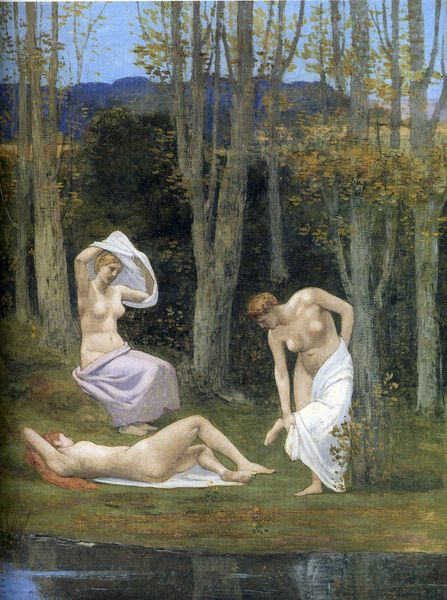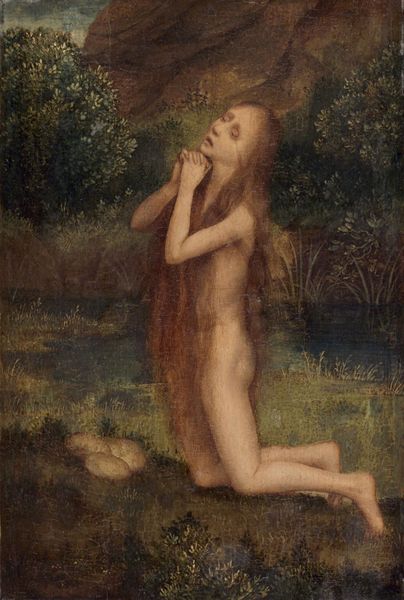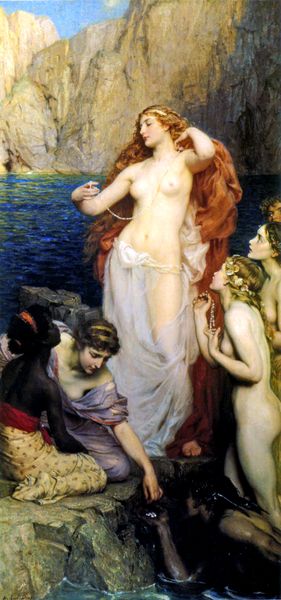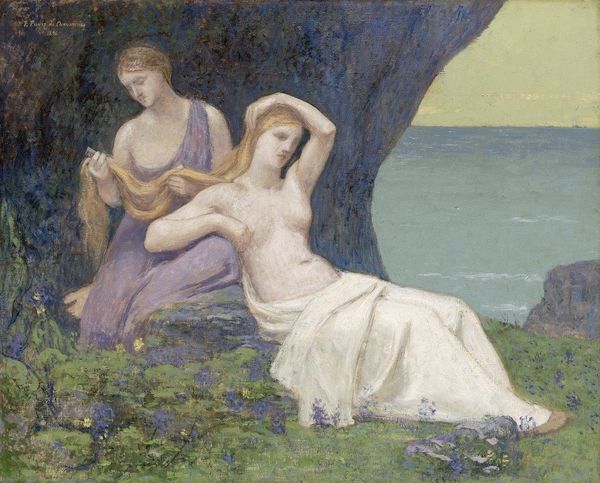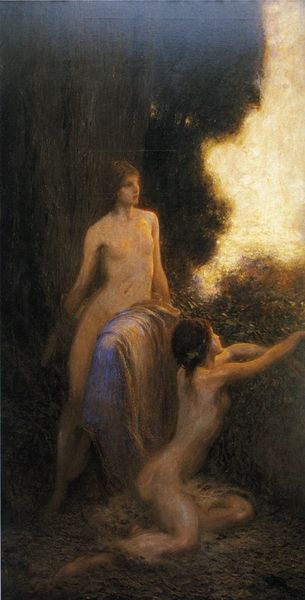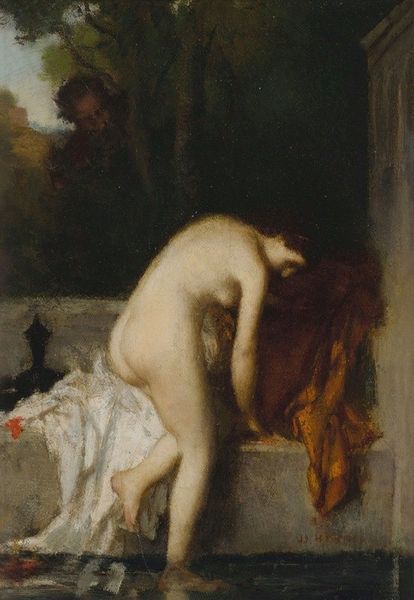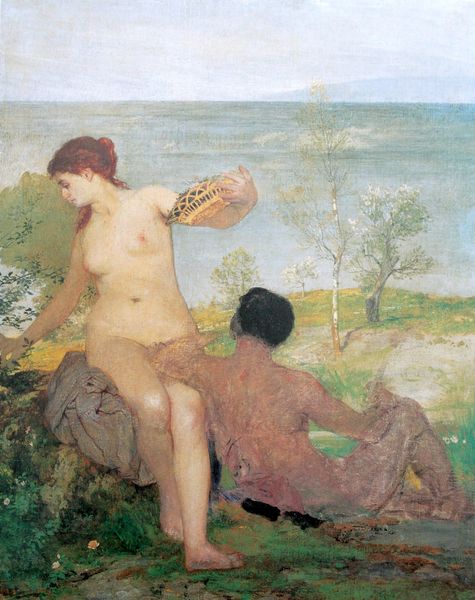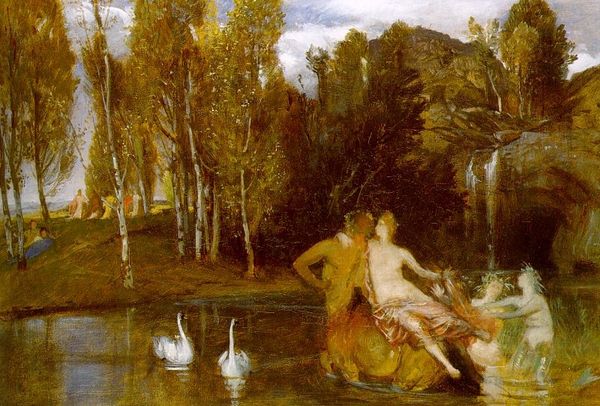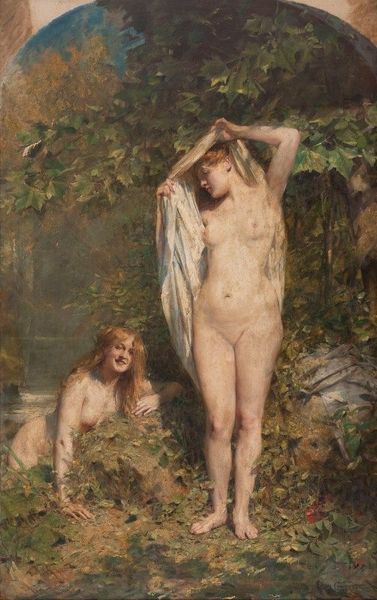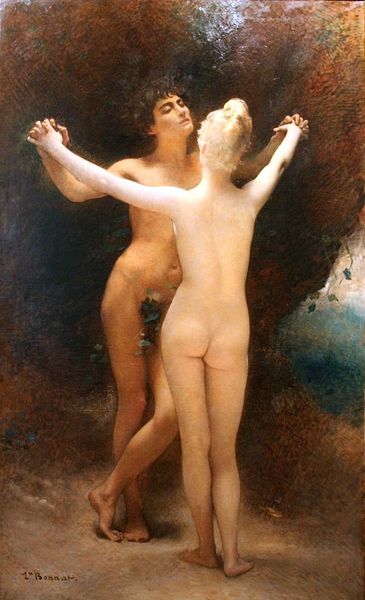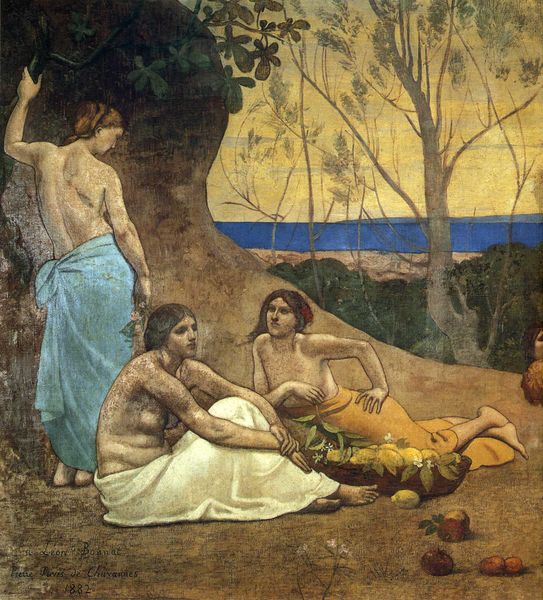
tempera, painting
#
gouache
#
tempera
#
painting
#
landscape
#
figuration
#
intimism
#
symbolism
#
academic-art
#
nude
Copyright: Public domain
Editor: This painting, titled "The Bathers," is by Pierre Puvis de Chavannes, done with tempera and gouache. It evokes such a serene, almost melancholic mood. What do you see in this piece? Curator: This work is steeped in the symbolism of its time, a visual echo of societal anxieties surrounding women and their bodies. Note how these figures are placed in a liminal space, neither fully natural nor traditionally classical. How does their ambiguous placement make you feel, especially considering the context of the late 19th century and its restrictive roles for women? Editor: It feels staged, almost theatrical. Their poses seem…deliberate. Curator: Precisely. This deliberate artificiality clashes with the supposed naturalness of the nude form, drawing attention to the male gaze inherent in its representation. Do you think it challenges or reinforces this gaze, and how? Consider how their lack of engagement with each other intensifies that gaze onto them. Editor: I guess it does reinforce it by not really offering any alternative viewpoint. Curator: Indeed. These women are passive figures in a landscape, seemingly unaware of their own vulnerability. This speaks volumes about the limitations placed upon women during that period and, in some ways, persists today. It provokes questions about autonomy, objectification, and the enduring power dynamics within artistic representation. Editor: I see that now, especially in the gaze of the seated figure, directed upwards, as if anticipating judgment. Thanks for opening my eyes to that. Curator: My pleasure. It’s through this critical lens that we can start to understand how art both reflects and shapes our understanding of social issues.
Comments
No comments
Be the first to comment and join the conversation on the ultimate creative platform.

